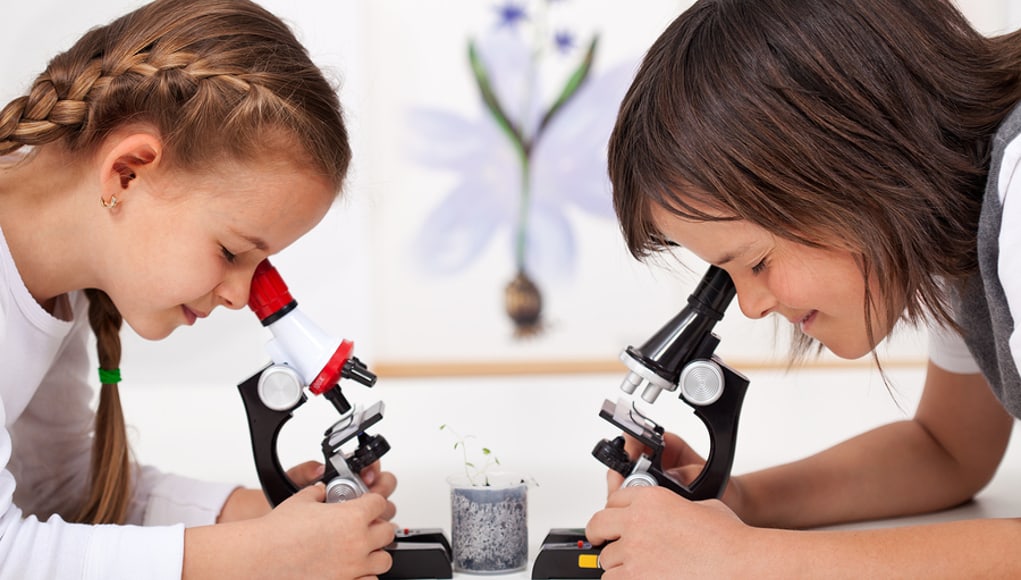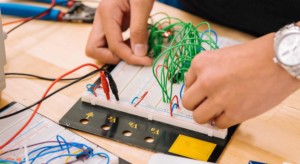The Value of a STEM/Humanities Partnership

While it is becoming increasingly critical for students to understand technology, coding, and computational thinking, we cannot let them lose sight of the importance of developing strong “soft skills” too. Future of work research tells us that human workers will need to be strong communicators, collaborators, listeners, analyzers, and problem-solvers. Fellow STEM educators: let’s work with our colleagues to integrate more of the humanities into our STEM classes. Here are some suggestions:
Consult with colleagues to strengthen writing and discussion in STEM classes.
The quality of student writing in my STEM classes sometimes falls short of my expectations. Even though I specify that students should use proper grammar, spelling, and punctuation, I wonder if some students hold themselves to different standards when writing in a STEM class. I find it helpful to check in with colleagues who have expertise guiding the writing process: How do I guide students through the writing process? How often should I provide interim checks on student writing? What kind of feedback is most helpful? What form should peer review take? How do I ensure students integrate my feedback into the final product? What are some tips for assessing writing?
I am not always confident eliciting student participation or leading class discussions about complex topics. For example, as my Introduction to Computer Science classes learned about Artificial Intelligence, we read articles and watched videos about bias, societal impact, and ethical concerns. I felt that our in-class discussions were not always as fruitful as they could have been. I consulted my colleagues who have more experience in this area, asking for advice and tips to improve the quality of in-class discussions.
Partner with humanities colleagues on projects of all sizes.
Creating a STEM/humanities partnership or project is a great way to model the importance of valuing the diversity that all disciplines bring to the table. Here are a few partnership ideas:
- National Poetry Month — Partner with an English teacher to explore Fibonacci poetry, science haiku, or poems with NASA. It takes a deep understanding of a STEM topic to express it via poetry.
- Creative writing — Writing in a STEM class can be creative! Investigate a STEM topic, such as how snowflakes form and ask students to demonstrate what they learned through creative writing.
- Visual Arts — Neuroscience research at Stanford suggests that representing concepts visually can help strengthen pathways in the brain. Partner with an art teacher to investigate the patterns and beauty in STEM. Explore photographs of science or math art. Have students create their own work with 3D printing, drawing, photography, or digital/coding software.
- Performing Arts — From music to design to choreography to set building to project management, many skill sets must come together to get a performance off the ground.
- Project-Based Learning — Bring multiple disciplines together to solve a real-world problem and communicate solutions to stakeholders.
- Artificial Intelligence — An exploration of machine learning can provide many opportunities for collaboration between STEM and humanities classes.
- Technical documentation — Partner with history or English teachers as students write a user manual or technical documentation for a historical or recent device. A peer review could judge which manuals best explain how to use the device or how the device works.
Use future of work research to support a STEM/humanities partnership.
To ensure my students connect the future of work with my efforts to integrate skills from multiple disciplines into their projects, I have been adding this small graphic to the top of assignments and rubrics:
I change the graphic to reflect the skills that best fit each project or assignment. My hope is that this graphic reminds students of the “soft skills” skills that they practice as they work. Thanks to collaboration with my humanities colleagues, I am improving my ability to more effectively integrate these skills into my STEM classes.
For more, see:
- The Superhero Schools of Philadelphia
- Swap Algebra 2 for Data Science, Get a 1-point Bump in the GDP
- Principia: The Future of Tradition
Stay in-the-know with innovations in learning by signing up for the weekly Smart Update.







Christopher Burns
Thanks Jamie for your insight into the critical importance of ensuring that students in STEM programs actually learn the importance of liberal arts. I prefer the term STEAM, with art added. I work for a Cincinnati tech company and we employ many techs and engineers. We hire those that are extremely talented not only with technical skills, but those that can also communicate and collaborate well other their colleagues and especially the customers. That sets us apart as an organization. We believe every employee is in sales to an extent, because they are either customer facing or the products and services they work on, are being delivered to or managed for the customers. Being able to communicate is essential for getting employed and promoted, as well as navigating the challenges of life.